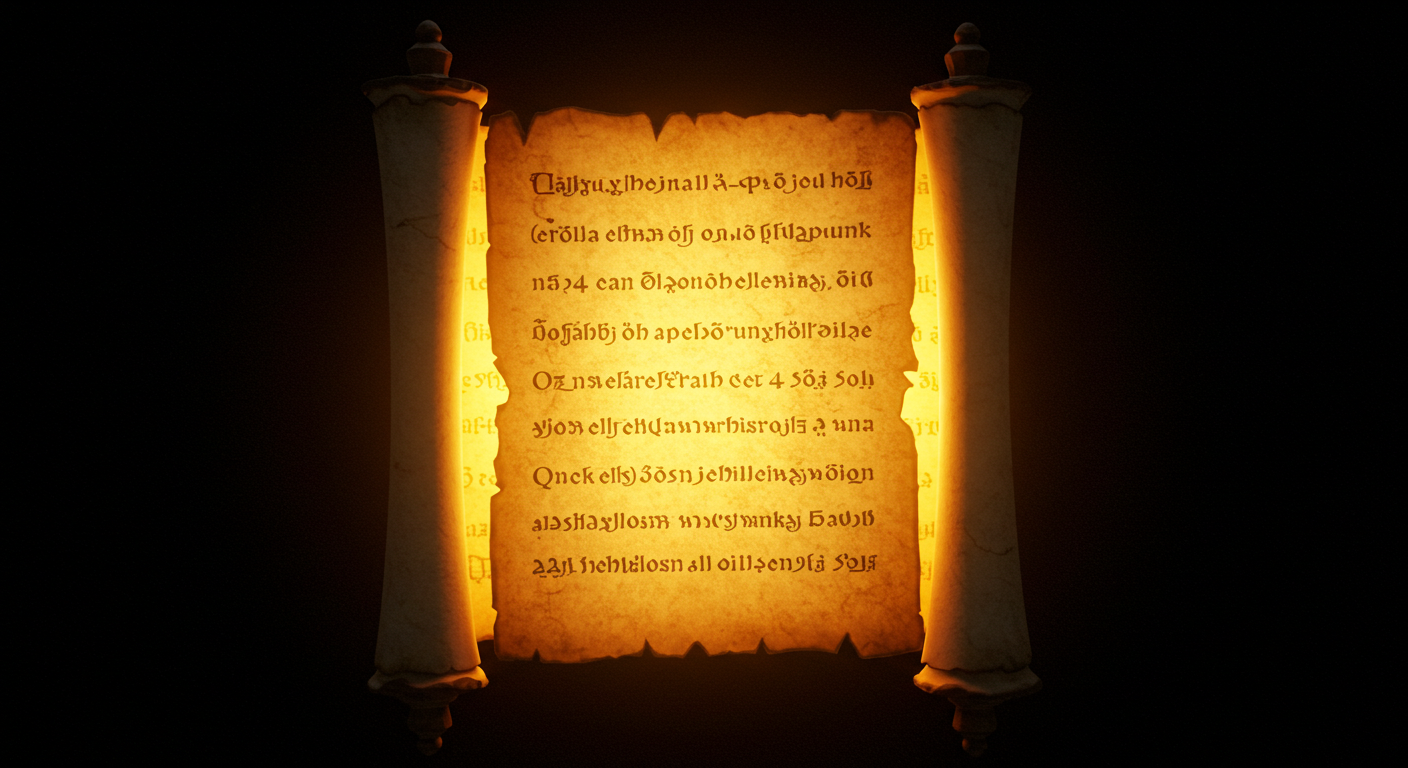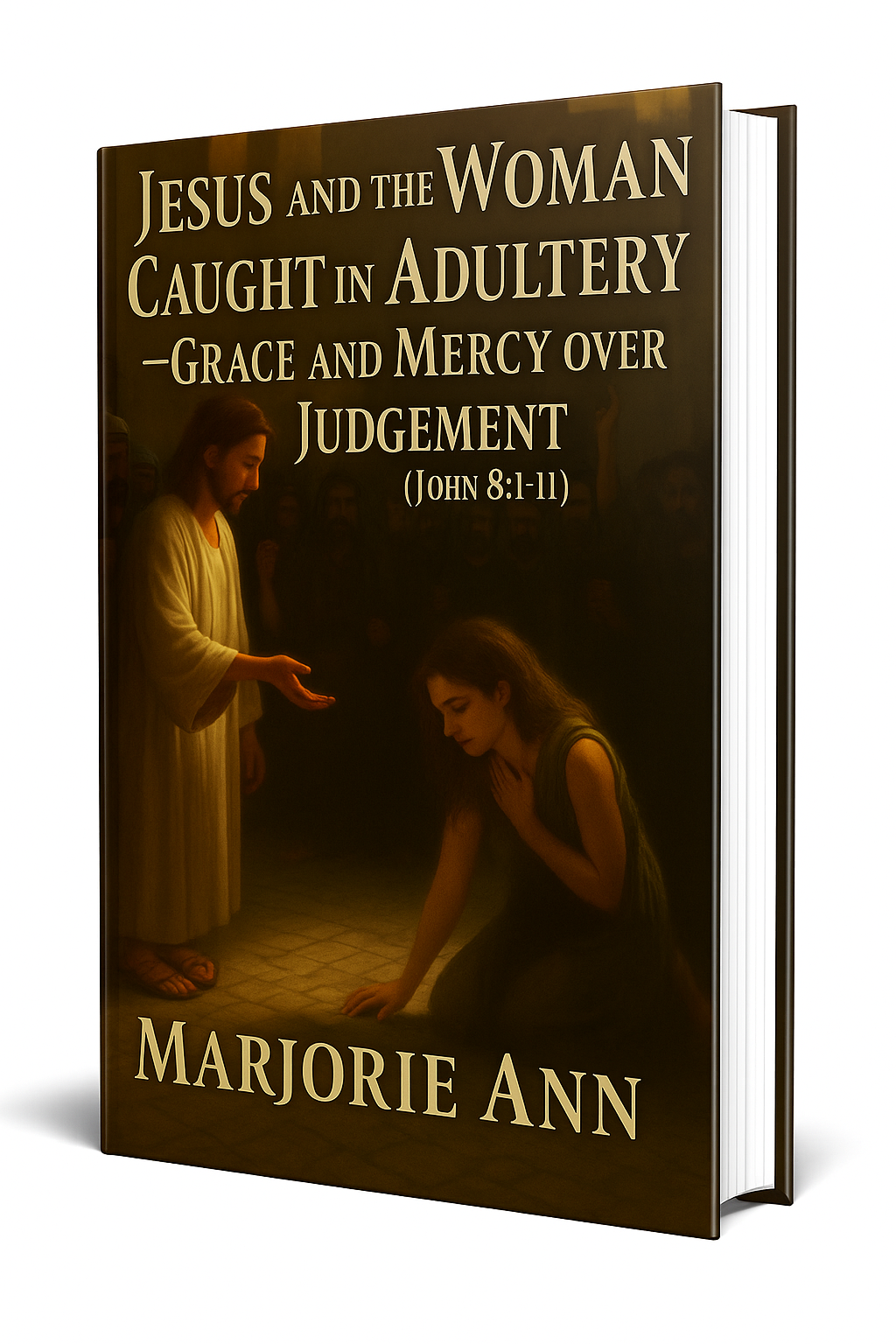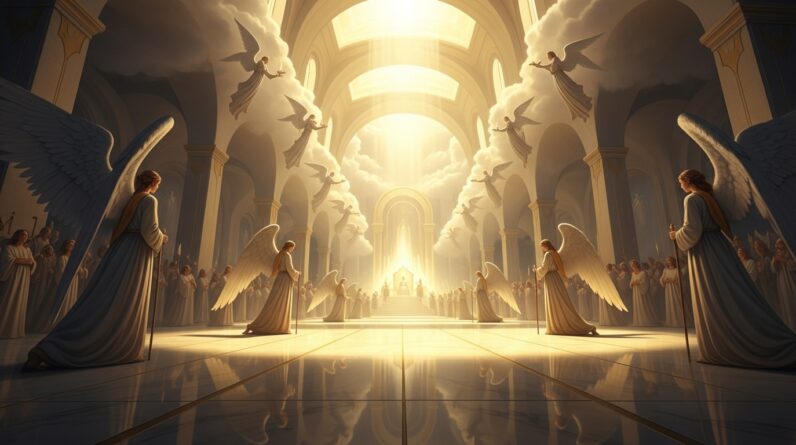Decoding The Symbolism In The Book Of Revelation
You’ve likely encountered the vivid imagery of Revelation and wondered what it all means. The book is saturated with symbols—beasts, bowls, seals, numbers, colors, cities and climactic visions—and learning to read those symbols well will change how you approach the whole New Testament apocalypse. This guide helps you decode the symbolism in Revelation by giving practical interpretive principles, unpacking common symbols, and pointing you to Bible passages and reliable resources so you can do your own reading with confidence. Throughout, you’ll see the focus keyword symbolism in Revelation used to keep you anchored in the topic and help you internalize the interpretive approach.
Why understanding symbolism in Revelation matters
When you read Revelation, you’re not reading a straightforward narrative; you’re encountering an ancient, prophetic, highly symbolic text written to comfort, correct and encourage communities under pressure. If you treat the book as a literal news report, you’ll miss the theological and pastoral point the author—John—intended. Understanding symbolism in Revelation matters because symbols carry theological weight: they link to Old Testament imagery, they frame cosmic conflict, and they shape how you see God’s victory in history and over evil. Grasping the symbolic language helps you apply Revelation’s message to your life, rather than getting stuck in speculation.
The historical and literary context shapes symbols
You can’t decode symbolism in Revelation without situating the book historically and literarily. Revelation was written in a specific time (likely late first century) to specific communities (the seven cities of Asia Minor) facing persecution, internal temptation and cultural pressure. Its genre—apocalyptic prophecy—uses visions, symbolic numbers, coded opponents and dramatic reversals. Knowing that Revelation follows Old Testament prophetic patterns and apocalyptic conventions equips you to spot references (for example, to Daniel and Ezekiel) rather than invent a new symbol system from scratch.
The role of Old Testament background
Most of Revelation’s symbols draw directly from the Old Testament. To decode symbolism in Revelation you’ll frequently need to consult prophetic books like Daniel, Ezekiel, Isaiah and the Psalms. For example, imagery of beasts, the Ancient of Days and heavenly thrones echoes Daniel Daniel 7:9-10, and the lamb motif points back to sacrificial themes and the Passover. Paying attention to those echoes prevents you from isolating symbols and helps you pick up consistent theological meanings across Scripture.
Common symbolic categories you’ll bump into
The symbolism in Revelation clusters into familiar categories—numbers, colors, animals, objects and events. Recognizing these categories helps you form interpretive hypotheses and test them against the whole text.
Numbers and their symbolic load
Numbers are everywhere in Revelation: seven, twelve, 144,000, 666. They often represent completeness, divine governance and covenantal identity rather than mathematical precision. For instance, seven frequently signals fullness (seven churches, seven spirits, seven seals), whereas twelve evokes God’s people (the twelve tribes and twelve apostles). When you see a number, ask whether it functions symbolically rather than literally in the immediate context.
Colors and symbolic meaning
Colors in Revelation are used intentionally. White often signals purity or victory, red connotes war or bloodshed, and black indicates famine or judgment. For example, the four horsemen include white, red, black and pale horses, each communicating a different aspect of crisis. Colors rarely stand alone; they work with images and actions to form a theological tableau.
Animals and mythic creatures
Beasts, dragons, lambs and horses dominate the book’s imagery. Many of these creatures are neither mere animals nor literal entities but theatrical embodiments of powers and spiritual realities. The dragon in Revelation 12 functions as a symbol of destructive cosmic evil connected to the serpent motif in Genesis, and the lamb is a symbol of both sacrifice and sovereign victory. Reading these creatures as symbolic ensures you hear the theological message behind the drama.
Objects, places and actions
Objects such as seals, trumpets and bowls represent stages of judgment and revelation. Places like Babylon the Great stand for systems opposed to God’s order. Actions—binding, opening, worshiping—communicate the trajectory of divine justice and vindication. The symbol isn’t just an image; it’s an enacted truth in the narrative world of Revelation.
Principles for interpreting symbolism in Revelation
You’ll do well to adopt a set of interpretive habits when you approach symbolism in Revelation. These principles will help you avoid common errors and ground your reading in both the text and its theological aim.
Read symbols in their immediate context
Always read a symbol in the sentences and scenes around it. Revelation repeatedly defines or explains its imagery within the narrative. For instance, John interprets the seven stars and lampstands for you—he calls them the angels of the churches and the churches themselves—so you should accept that explanatory help rather than forcing a different meaning. See Revelation 1:20 for the explicit link between symbol and referent.
Use the whole Bible as your interpretive frame
Symbols in Revelation draw on the Bible’s symbolic economy. You should check Old Testament antecedents and New Testament parallels. This is why references to Daniel, Isaiah and Ezekiel are so helpful: they give you a vocabulary and repeated motifs that inform the new usage in Revelation. For example, comparing Revelation’s throne-room scenes to Daniel’s visions helps you see continuity in God’s sovereignty Daniel 7:9-10.
Let the genre guide your expectations
Apocalyptic literature uses symbolic language to depict cosmic realities and future hope. It’s not a straightforward prophetic oracle nor a simple allegory, and it often compresses meaning into an image. When you expect allegory, you may over-interpret details; when you expect literal reportage, you miss theological symbolism. Let the apocalyptic genre mediate your expectations about signs and symbols.
Avoid proof-texting and forced precision
Because the symbols feel dramatic, you might be tempted to map them onto modern events or precise timelines. That’s risky. Symbolism in Revelation tends to point to theological truths about God, evil, judgment and hope rather than giving a blow-by-blow chart of history. Resist the urge to press each detail into a one-to-one correspondence with a contemporary event.
Compare consistent symbols across the book
Certain images repeat and remain consistent in meaning. For example, the lamb consistently represents Christ’s sacrificial victory; Babylon consistently represents idolatrous, oppressive systems. Tracking a symbol’s recurrence will reveal its theological contour more reliably than isolated readings.

Key symbols in Revelation—what they mean and why they matter
Now let’s walk through some of the most important symbols you’ll encounter and show you how to read them.
The seven churches and seven letters
The opening chapters address seven churches and include letters of commendation and correction. The number seven conveys completeness: John is writing to representative congregations across Asia Minor. Reading the letters helps you understand how the symbolic visions that follow are meant to encourage and call local churches to faithful witness. See the letters in Revelation 2–3.
The seven seals
The seven seals structure the early part of the apocalypse and mark stages of revelation. When you see a seal opened at the beginning of a scroll, think in legal and royal terms: a sealed document is authoritative and opened only by the rightful sovereign. The scroll and seals in Revelation 5:1-5 show that only the lion of Judah—the slain lamb—has the authority to unveil God’s purposes. Each seal’s imagery (for example, the horsemen introduced in Revelation 6:1-8) should be read as symbolic actions revealing human brokenness and divine response.
The four living creatures and the twenty-four elders
John’s heavenly throne room features four living creatures and twenty-four elders who worship around the throne. These figures combine Old Testament temple imagery and cosmic representation. The four living creatures look back to Ezekiel and represent aspects of creation; the twenty-four elders suggest the fullness of redeemed humanity (twelve tribes + twelve apostles) or a heavenly council. Their continual worship of God underscores Revelation’s main point: behind the chaotic world sits a sovereign God in control. See Revelation 4:6-8 for the scene.
The Lamb with seven horns and seven eyes
The lamb is slain yet standing—a paradox that points to Christ’s sacrificial death and triumphant authority. The seven horns imply power; the seven eyes suggest perfect knowledge (and they are identified as the seven spirits of God). When you read the lamb in Revelation 5:6, read it theologically: this is not a helpless victim but the world’s redeemer who alone is worthy to break the seals and enact God’s plan.
The dragon, the woman, and the male child
Revelation 12 contains a dramatic symbolic narrative: a woman clothed with the sun, a dragon waiting to devour her child, and the child’s ascension. The woman often symbolizes faithful Israel or the people of God, and the child evokes messianic expectation—Jesus. The dragon is explicitly identified elsewhere with the ancient serpent and embodies cosmic evil set against God’s people. Read this as a mythic recounting of cosmic conflict that transcends a single historical moment. See Revelation 12:1-4 for the passage.
The two beasts: sea and land
Revelation 13 introduces two beasts—one rising from the sea and another from the earth—that symbolize imperial power and false prophecy cooperating to deceive and coerce worship. The sea-beast draws on Daniel’s beast imagery, representing chaotic empires; the land-beast acts as a propagandist enforcing the empire’s claims. When you interpret these beasts, see them as symbolic portraits of institutional evil and its religious accomplices rather than as strictly individual futures. Check Revelation 13:1-2 for the text.
The number 666
The infamous 666 appears in Revelation 13:18 and invites you to do careful interpretive work. Many scholars read it as a coded reference to oppressive rulers—using gematria, the practice of equating letters with numbers. Historically, the number often points readers toward Nero or comparable figures. Whether you read it historically or symbolically, the point is that the system opposing God is characterized by human ends and arrogance. Treat 666 as symbolic shorthand for idolatrous, dehumanizing power.
Babylon the Great
Babylon stands in Revelation as the archetypal city of wickedness—commerce, persecution and spiritual adultery combined. Babylon is less about a particular geographical city (though it references Rome and older Babylonian motifs) and more about any corrupt civilization that exalts itself against God’s order. The fall of Babylon in Revelation 17:3-6 and Revelation 18:2 offers a symbolic reversal: the empires that seem invincible collapse before divine justice.
The rider on the white horse (Revelation 19)
When Revelation 19 introduces a rider on a white horse, a sword coming from his mouth and eyes full of fire, you’re hearing a symbolic portrait of a divine warrior-king who judges and shall rule. This rider is distinct from the deceptive “white horse” of the first seal; the rider here wins the decisive battle and executes justice. See Revelation 19:11-16 to see the image and read it as the culminating victory of the Lamb’s mission.
The millennium and the binding of Satan
Revelation 20 speaks about Satan being bound for a thousand years and the reign of the saints. Whether you read the thousand years (the millennium) literally or symbolically, the point is theological: evil will be restrained long enough for Christ’s rule to be visible and for God’s people to enjoy vindication. The symbolic reading emphasizes inaugurated eschatology: Jesus’ victory is present but not yet fully consummated. See Revelation 20:1-3 and Revelation 20:4-6.
The New Heaven, New Earth, and New Jerusalem
The climactic symbols in Revelation point toward hope. The new heaven and new earth, and the descent of the New Jerusalem, portray a renewed creation where God dwells with his people, healing memory and reversing exile. You can read Revelation 21:1-4 as a vision shaped by Genesis and Ezekiel but oriented to future renewal. Symbolism in Revelation here becomes comfort: the final picture is not the destruction of reality but its reclamation and transformation by God.
How to apply the symbols to your reading and life
Interpreting symbolism in Revelation isn’t just an academic exercise; it shapes your life and ministry. As you decode the symbols, consider how they function spiritually and pastorally.
Read for pastoral correction and encouragement
The symbols call you to faithfulness under pressure. Revelation’s letters and visions correct complacency, call for endurance, and promise vindication. When you read the dragons and beasts, let those images fuel your resistance to idolatry and deepen your trust in God’s vindicating justice.
Be wary of speculative timelines
Symbolism in Revelation resists easy chronological mapping to present-day events. While you can make historical correlations, avoid the trap of using Revelation’s symbols primarily to justify a timeline of current events. That approach distracts from the book’s pastoral aim.
Engage the community and scholarship
You don’t need to interpret these symbols alone. Historical commentaries, church tradition, and contemporary scholarship offer interpretive frameworks that keep you honest and humble. Use resources like Bible Gateway and Bible Hub to consult translations, commentaries, and cross-references as you study passages.
Use tools responsibly
Bible Gateway and Bible Hub are excellent for cross-referencing and checking how words and symbols are translated and understood across versions. For example, when you want to compare how the “lamb” is presented, search Revelation 5 on Bible Gateway: Revelation 5. These tools help you track symbolic language across the canon.
Case studies: reading particular passages carefully
To solidify your skill in decoding symbols in Revelation, let’s walk through a few passages line-by-line so you can see the method in action.
Case study 1 — Revelation 1:9–20: vision, lampstands, and stars
In the opening vision, John sees a glorified figure and hears about seven lampstands and seven stars. The lampstands are explicitly identified as the seven churches; the stars are the angels of the churches. Because John explains the symbols in Revelation 1:20, follow his interpretation. The surrounding context—letters to churches—grounds the symbolic vision: it’s not cosmic trivia but pastoral interaction. When you decode symbolism in Revelation here, prioritize authorial explanation, local application, and theological meaning (Christ among his churches) over sensational speculations.
Case study 2 — Revelation 12: a cosmic maternal drama
In Revelation 12, the symbolic woman, dragon, and child dramatize cosmic realities. The woman’s birth and the dragon’s attempt to devour the child link to Israel’s history and to the Messiah’s suffering and vindication. You’ll see intertextual echoes of the Exodus, Davidic promises, and prophetic deliverance. Rather than chasing an exact modern analog, interpret the scene as a timeless portrayal of God’s redemptive purposes and the persistent threat posed by cosmic evil. Read the primary passage at Revelation 12 and then look back to OT texts like Isaiah 66:7-8 for thematic resonance.
Case study 3 — Revelation 21–22: New Creation and practical hope
When Revelation ends with the New Jerusalem and the river of the water of life, it’s easy to get lost in architectural detail. But decoding the symbolism in Revelation’s conclusion reveals pastoral consolation: God will restore the order of creation and remove the sting of death. The New Jerusalem symbolizes God’s permanent presence with redeemed humanity. Let the image provoke worship, not only curiosity. Read Revelation 21:1-4 and Revelation 22:1-5 and then reflect on how creation-care, worship, and justice are reframed in your community.
Practical tips for studying symbolism in Revelation
You don’t need to memorize categories or be fluent in every ancient cultural reference to start reading Revelation better. Adopt a few practical habits that will improve every study session.
- Read sections slowly and aloud to feel their rhythm and structure.
- Use reliable translations and compare them (Bible Gateway lets you switch versions easily).
- Look up Old Testament echoes with Bible Hub or Bible Gateway’s cross-reference tools to see where symbols are anchored.
- Keep a journal of symbol occurrences and how the book itself interprets them—this helps you notice consistent meanings rather than isolated curiosities.
Common interpretive pitfalls to avoid
As you practice decoding symbolism in Revelation, watch for common traps.
Over-literalizing the image
When you treat symbolic scenes as literal photographs of future events, you lose symbolic nuance and theological import. Symbols often compress a range of meaning; literalizing them flattens their richness.
Allegorizing everything
The opposite error is to allegorize so thoroughly that the historical and pastoral context disappears. Not every detail is a moral lesson in disguise—some items are concrete within the symbolic story and should be read that way.
Isolated verses without narrative flow
Reading a single verse as if it stands alone ignores how Revelation builds a panorama of meaning. Always relate a verse back to its immediate and book-wide context.
Using contemporary resources well
You’ll deepen your ability to decode symbolism in Revelation when you pair your reading with reputable resources.
- Bible Gateway is excellent for cross-version comparison and quick passage lookup. For example, use Revelation 5:1-5 to read the scroll and lamb scene across translations.
- Bible Hub offers commentaries, interlinear tools, and original-language helps that let you see how the Greek terms contribute to symbolism.
- Consult reputable commentaries (e.g., N.T. Wright’s, G.K. Beale’s, or the New International Commentary series) for mature theological engagement with symbols. These secondary sources help you weigh symbolic possibilities responsibly.
Bringing symbolism to worship and ministry
You can bring Revelation’s symbols into preaching, teaching, and pastoral care in ways that honor the text. Use imagery to frame sermons on perseverance, worship, and hope. Apply Babylon’s critique to contemporary economic and cultural idolatries in a measured way that calls for repentance and social justice. Let the New Jerusalem inform your theological imagination about God’s future, motivating your congregation toward faithful presence in the world.
Final reflections on reading Revelation faithfully
Decoding symbolism in Revelation is an ongoing craft—one that rewards patience, humility, and disciplined use of Scripture. The symbols are not puzzles to be solved for sensational headlines; they’re theological tools that shape your vision of God, Christ, and the world’s destiny. When you let Revelation’s imagery speak through its biblical roots, literary genre, and pastoral context, the book becomes a companion for the trials of faith rather than a source of confusing speculation.
If you want to deepen your practice, start with repeated readings of short sections (e.g., a single vision), look up every Old Testament echo on Bible Gateway or Bible Hub, and journal what the symbol meant to the first readers and what it says to you today.
Explore More
For further reading and encouragement, check out these posts:
👉 7 Bible Verses About Faith in Hard Times
👉 Job’s Faith: What We Can Learn From His Trials
👉 How To Trust God When Everything Falls Apart
👉 Why God Allows Suffering – A Biblical Perspective
👉 Faith Over Fear: How To Stand Strong In Uncertain Seasons
👉 How To Encourage Someone Struggling With Their Faith
👉 5 Prayers for Strength When You’re Feeling Weak

📘 Jesus and the Woman Caught in Adultery – Grace and Mercy Over Judgement
A powerful retelling of John 8:1-11. This book brings to life the depth of forgiveness, mercy, and God’s unwavering love.
👉 Check it now on Amazon 🛒💥
🔥 “Every great message deserves a home online.” 🌍💬🏡
Don’t let your calling stay hidden. Start a Christian blog or website using Hostinger — with 99.9% uptime, a free domain, and SSL, your voice can shine for God’s glory anytime, anywhere.
💥 Begin today. 🛒 Try it RISK-FREE! ✅
✝️ “Your body is God’s temple — care for it with purpose.” 💪💖🏛️
Renew your energy and restore balance naturally. Mitolyn helps support a healthy metabolism, giving you the vitality to live out God’s calling with strength and confidence.
🔥 Unlock Your Metabolic Power! ⚡Burn More Calories & Feel Great With Mitolyn. 💪
👉 Start Today. 🚀 Check Price Now. 🛒💰
💰 As a ClickBank & Amazon Affiliate, I earn from qualifying purchases.
📖 Acknowledgment: All Bible verses referenced in this article were accessed via Bible Gateway (or Bible Hub).
🚀 Want to explore more? 👉 Dive into our new post on Why Jesus? and experience the 🔥 life-changing truth of the Gospel!








